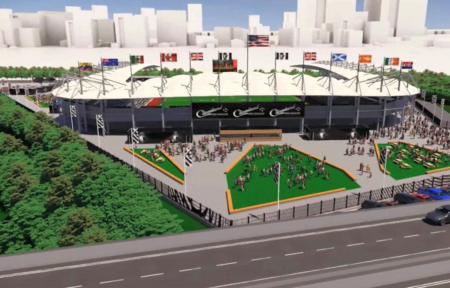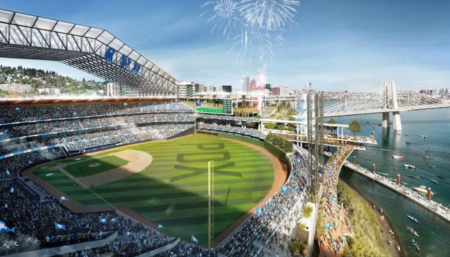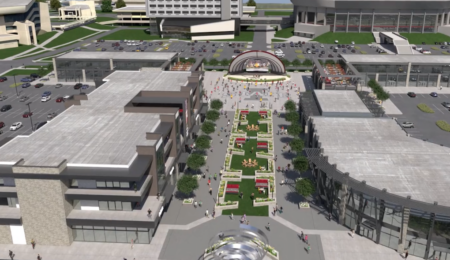Image courtesy of Arup
Italian soccer club ACF Fiorentina has unveiled plans for its new football stadium to the city of Florence, architect Arup has revealed in a company statement. The venue will host the home matches of the club and will be part of the redevelopment of a 118-acre area that includes public spaces, an interchange parking lot and a shopping mall. The site is adjacent to the airport, 2.5 miles west of the Cathedral and Giotto bell tower, and well connected to the city and the surrounding areas.
The new stadium, developed by Arup’s architecture and engineering team in Milan, with support from several other European offices, is the most recent example of the architecture firm’s expertise in designing sports projects across the world.
“We have embraced this exciting privilege and acknowledge the great responsibility in designing this stadium, to make the best possible experience for the Fiorentina fans and to make the most beautiful and well-considered building that we can for the City of Florence,” says James Finestone, lead architect at Arup.
The design takes inspiration from the local history and landscape to define a well-rooted building that represents an opportunity for the redevelopment of the area and will be the modern home of ACF Fiorentina. The venue will focus on the fans, using the latest technologies to enhance the spectators’ experience before, during and after the matches ,and gives special attention toward families.
“We have collaborated with Fiorentina for the last two years to define a detailed brief, specifically built on their desires and expectations,” adds Luca Buzzoni, Arup project leader. “We have therefore designed a stadium that reflects the local history and landscape in a modern way and provides a great and comfortable new home for the team and its fans.”
Technology and modern design tools have also been an integral part of the entire design process: Arup developed bowl generation tools to provide the best sightlines at every location, and virtual reality simulations were used to allow a real-time assessment of the fans’ experience in the stadium.




